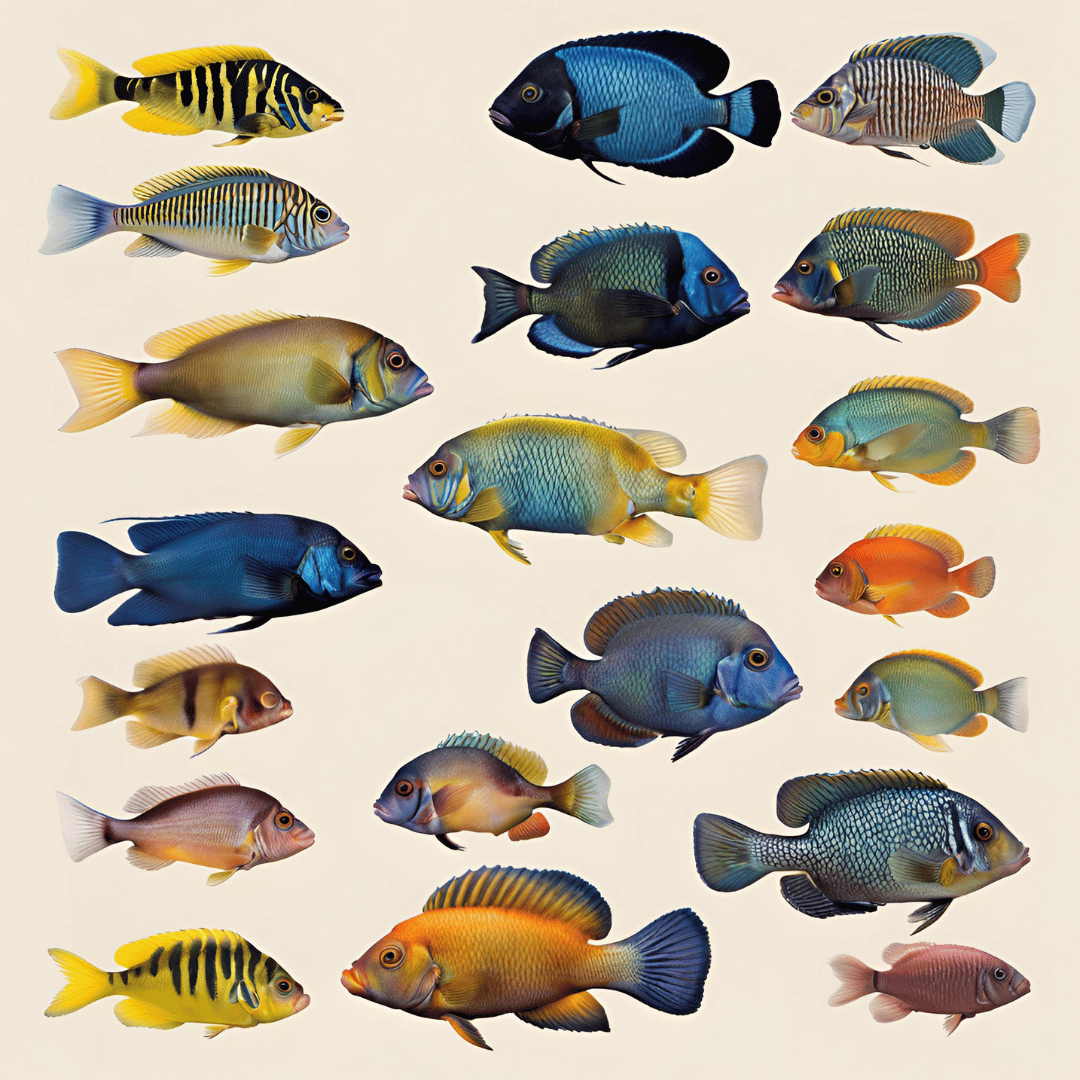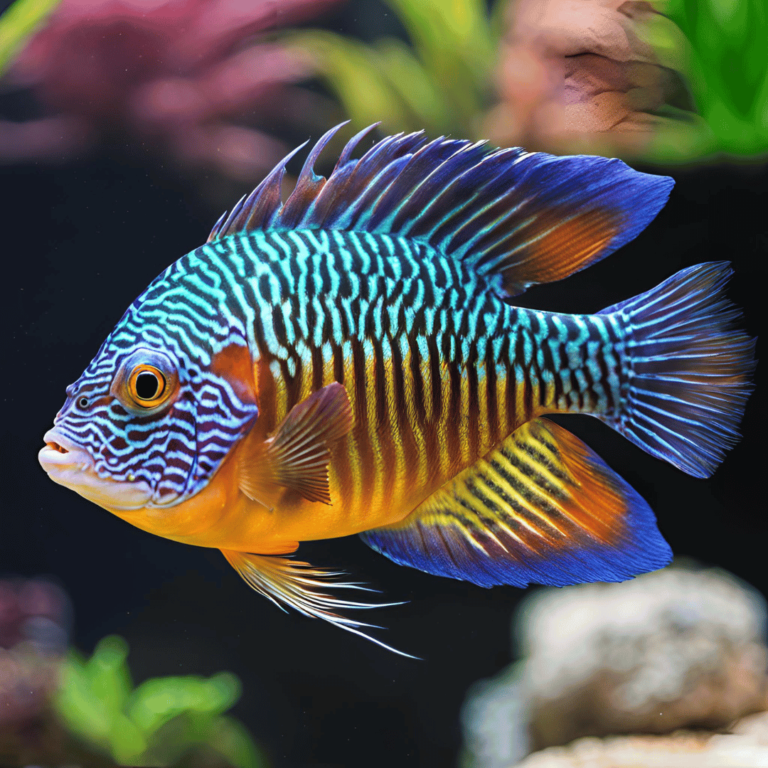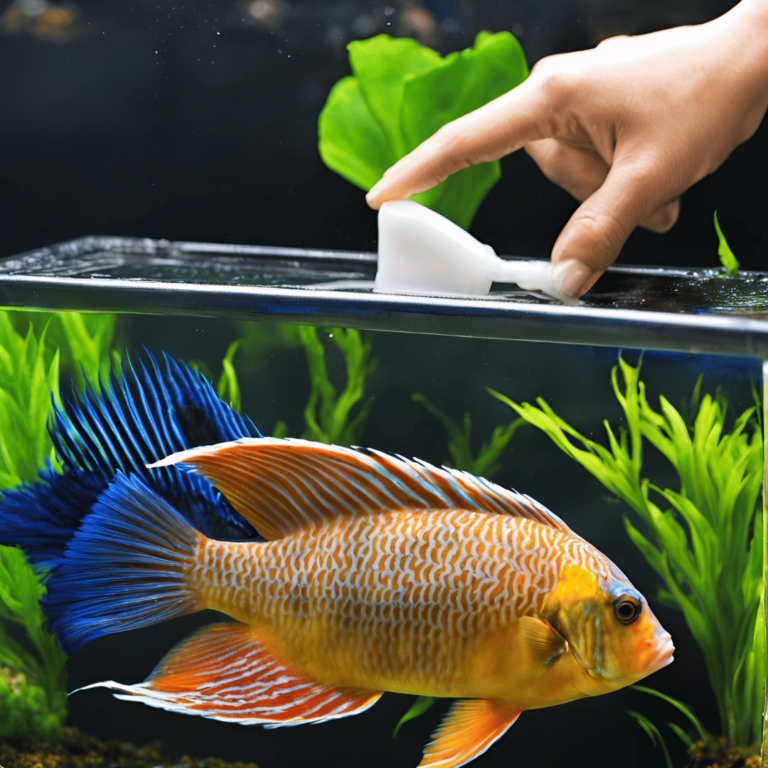Your trusted guide to cichlid care, tank setups, and quality products.

Peacock Cichlids vs Other African Cichlids: 5 Expert Tips for Stunning Aquariums
Explore Peacock Cichlids vs. other African cichlids! Learn 5 key differences in care, behavior, tank setup, and diet to create a stunning, healthy aquarium.
Image credits Canva
African cichlids are among the most captivating fish in the aquarium hobby. Their vibrant colors, dynamic behaviors, and diverse species make them a top choice for aquarists. When comparing Peacock Cichlids vs Other African Cichlids, Peacock Cichlids stand out for their dazzling hues and relatively peaceful nature. In this guide, we’ll explore the key differences and provide five expert tips to help you create a stunning aquarium.
At PeacockCichlid.com, we believe in transparency and honesty with our readers. Some of the links in this article are affiliate links, which means we may earn a small commission if you make a purchase through them—at no additional cost to you. These commissions help support our site, allowing us to continue providing expert advice, in-depth guides, and valuable content for Peacock Cichlid enthusiasts like you.
We only recommend products that we trust and believe will be beneficial for your aquarium. Thank you for your support!
What Are Peacock Cichlids?
Peacock Cichlids, scientifically known as Aulonocara, originate from Lake Malawi in East Africa. They’re famous for their striking colors, which range from electric blues to fiery reds, yellows, and oranges. Male Peacock Cichlids are particularly vibrant, while females display more subdued tones.
These fish are highly sought after for their manageable temperament compared to other cichlids. Unlike many African cichlids, Peacock Cichlids exhibit a peaceful nature, making them ideal for community tanks. Understanding the distinctions between Peacock Cichlids vs Other African Cichlids, including Mbuna and Tanganyikan varieties, is vital to creating a harmonious aquarium.
1. Behavior and Aggression Levels: Peacock Cichlids vs Other African Cichlids
When comparing Peacock Cichlids vs Other African Cichlids, behavior and aggression are key factors to consider. Each type of cichlid brings its own dynamic to the tank.
- Peacock Cichlids: Known for their peaceful demeanor, they show mild territorial tendencies, primarily during breeding. With ample space and proper tank mates, they thrive in community settings.
- Mbuna Cichlids: Aggressive and territorial by nature, Mbuna require specific tank conditions to manage their dominance. They’re often incompatible with less assertive species.
- Tanganyikan Cichlids: Their behavior varies significantly. Small species like shell dwellers can be territorial but manageable, while larger species like Frontosa are peaceful yet may prey on smaller fish.
Expert Tip: For a tranquil tank with vibrant colors, Peacock Cichlids are an excellent choice. Their manageable temperament is perfect for beginners and aquarists who value peaceful environments.
2. Tank Size and Setup for Peacock Cichlids vs Other African Cichlids
Tank setup is critical to the success of your aquarium. Comparing Peacock Cichlids vs Other African Cichlids, their environmental preferences vary widely.
- Peacock Cichlids: These active swimmers need at least a 55-gallon tank. They prefer a habitat with open swimming areas complemented by moderate rock structures.
- Mbuna Cichlids: Rock dwellers by nature, Mbuna require densely packed caves and crevices to establish territories and reduce aggression.
- Tanganyikan Cichlids: These fish have diverse needs. While some thrive in sandy substrates with shells, others demand spacious tanks with open areas.
Expert Tip: Design a well-balanced tank for Peacock Cichlids by incorporating both open areas and rocky shelters. A thoughtful setup minimizes stress and promotes healthy interactions.
Adding driftwood, aquatic plants, or decorative stones can further enhance the aesthetics of your tank while creating hiding spots. Always ensure the tank is large enough to accommodate the swimming habits and territorial behaviors of your fish.
3. Dietary Needs: Peacock Cichlids vs Other African Cichlids
Diet is a cornerstone of fish health. Comparing Peacock Cichlids vs Other African Cichlids, their feeding habits reveal distinct differences.
- Peacock Cichlids: Carnivorous by nature, they benefit from a protein-rich diet. Offer high-quality cichlid pellets, bloodworms, and brine shrimp for optimal health.
- Mbuna Cichlids: Primarily herbivorous, their diet should consist of plant-based foods like algae wafers and spirulina. Excess protein can lead to health issues.
- Tanganyikan Cichlids: Their dietary needs vary depending on the species. Research specific requirements to provide balanced nutrition.
Expert Tip: Feed Peacock Cichlids a carnivorous diet tailored to their needs. Avoid mixing them with herbivorous species like Mbuna to prevent dietary conflicts and ensure compatibility.
For an extra health boost, consider supplementing their diet with occasional treats like live foods or frozen options. A varied diet helps enhance their coloration and supports a robust immune system.
4. Water Parameters for Peacock Cichlids vs Other African Cichlids
Stable water conditions are essential for the health and vibrancy of African cichlids. Comparing Peacock Cichlids vs Other African Cichlids, their preferred parameters differ.
- Peacock Cichlids: They thrive in water with a pH of 7.5 to 8.5 and temperatures ranging from 76°F to 82°F. Consistent conditions are crucial for their well-being.
- Mbuna Cichlids: While they share similar pH requirements, overcrowding often exacerbates their aggression, making stable tank conditions even more critical.
- Tanganyikan Cichlids: These fish often prefer higher pH levels (8.0 to 9.0) and cooler temperatures, which can be challenging to maintain alongside Peacock Cichlids.
Expert Tip: Tailor your tank’s water parameters to suit Peacock Cichlids. Avoid mixing them with species requiring significantly different conditions to ensure a stress-free environment.
Regular water changes, effective filtration, and water testing are essential to maintaining stability. Consider investing in a high-quality water conditioner to neutralize harmful chemicals and keep your fish healthy.
5. Coloration and Appearance: Peacock Cichlids vs Other African Cichlids
The visual appeal of cichlids is unmatched. Comparing Peacock Cichlids vs Other African Cichlids, their stunning coloration often takes center stage.
- Peacock Cichlids: Renowned for their dazzling colors, male Peacock Cichlids showcase vibrant blues, reds, yellows, and oranges that add a wow factor to any tank.
- Mbuna Cichlids: While they boast beautiful colors, their patterns are simpler, often featuring stripes or solid shades of blue, yellow, or orange.
- Tanganyikan Cichlids: These fish are less vivid but exhibit unique shapes, intricate markings, and striking patterns.
Expert Tip: Choose Peacock Cichlids for their vibrant hues and dramatic impact. Their stunning appearance makes them the ultimate choice for aquarists looking to create a visually impressive aquarium.
To enhance their coloration, ensure they receive proper nutrition, and consider lighting systems that highlight their natural beauty. Avoid keeping them in overly dim tanks, as their colors may appear muted.
Final Thoughts: Peacock Cichlids vs Other African Cichlids
Choosing between Peacock Cichlids vs Other African Cichlids depends on your experience and the type of aquarium you want to create. Peacock Cichlids are ideal for beginners and aquarists seeking peaceful, colorful fish. If you’re looking for a challenge, Mbuna offer bold personalities, while Tanganyikans bring unique beauty and behaviors.
To ensure success, research the specific needs of your chosen species. Prioritize tank setup, diet, and water conditions to create a harmonious and thriving aquarium. Whether you’re a beginner or an experienced hobbyist, understanding the nuances of Peacock Cichlids vs Other African Cichlids will help you make informed choices.
Looking for additional resources or high-quality supplies? Check out our curated recommendations to make your aquarium a true masterpiece!
Thank you for reading our guide on how Peacock Cichlids compare to other African cichlids and how you can keep your aquarium looking stunning. To further enhance your care routine, be sure to check out our other expert articles such as Peacock Cichlid Tank Maintenance: 14 Proven Tips for Success and Peacock Cichlid pH Stability: 10 Powerful Steps for Success for more in-depth maintenance advice. If you’re aiming to create a breathtaking aquatic display, don’t miss Peacock Cichlid Tank: 10 Expert Tips for a Stunning Setup. For additional insights on behavior and beginner care, explore 7 Proven Tips to Reduce Peacock Cichlid Aggression in Tanks and Peacock Cichlid Care: 7 Powerful Tips for Beginners.
At peacochcichlid.com, we’re committed to helping you achieve a vibrant and healthy aquarium. Visit us again soon and be sure to follow our social media channels for the latest tips and trends in aquarium care!
FAQ’s
What makes Peacock Cichlids unique compared to other African cichlids?
Peacock Cichlids are known for their vibrant colors and peaceful temperament, making them ideal for community tanks. Unlike Mbuna or Tanganyikan cichlids, they exhibit less aggression and thrive in well-balanced habitats.
Can Peacock Cichlids and Mbuna Cichlids live together?
While it’s possible, it’s not recommended. Mbuna Cichlids are aggressive and may outcompete Peacock Cichlids for territory and resources. It’s best to keep them in separate tanks to avoid stress and conflicts.
How do the dietary needs of Peacock Cichlids differ from other African cichlids?
Peacock Cichlids require a protein-rich diet, while Mbuna Cichlids thrive on plant-based foods. Mixing these species can lead to dietary conflicts, so it’s important to cater to their specific needs.
What is the ideal tank size for Peacock Cichlids?
A minimum of 55 gallons is recommended for Peacock Cichlids. This size provides ample swimming space and reduces territorial disputes. Larger tanks are needed if you plan to house multiple species.
Are Peacock Cichlids suitable for beginner aquarists?
Yes, Peacock Cichlids are a great choice for beginners. Their manageable temperament and stunning colors make them an excellent introduction to African cichlid care.
How can I enhance the coloration of Peacock Cichlids?
Provide a balanced diet rich in protein, maintain stable water conditions, and use proper lighting. These factors help bring out the vivid hues in Peacock Cichlids.
What water parameters do Peacock Cichlids prefer compared to other cichlids?
Peacock Cichlids thrive in water with a pH of 7.5 to 8.5 and temperatures of 76°F to 82°F. Other cichlids, like Tanganyikans, may require higher pH levels and cooler temperatures.
Can Peacock Cichlids coexist with Tanganyikan cichlids?
It depends on the species. Tanganyikan cichlids often have different water and dietary needs, making them less compatible with Peacock Cichlids in a shared tank.
What kind of tank decorations work best for Peacock Cichlids?
Include open swimming areas, moderate rock formations, and hiding spots. Avoid overcrowding the tank to keep Peacock Cichlids stress-free and healthy.
How do Peacock Cichlids compare to other African cichlids in terms of aggression?
Peacock Cichlids are less aggressive than Mbuna and some Tanganyikan species, making them easier to manage in community tanks. Their peaceful nature is a key reason they’re popular among aquarists.



